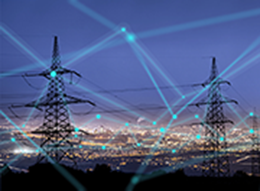
If you want to truly understand the U.S. electric power industry, this course is for you.
This in-depth seminar provides a comprehensive and clear explanation of the structure, function, and acronyms of today's U. S. electric power industry; ISO markets; the many industry topics listed below; and how PPAs, tolling, and heat rate power transactions are done.
Each part of this complex industry is explained piece-by-piece, and then the pieces are integrated so that you will finally understand of “how it all fits together.”
This proven online training program features the same material used in the popular PGS in-person classroom seminar. Register today and join the over 10,000 industry professionals who trust PGS for their energy training needs.
Get the best of both worlds with this blended learning approach.
You will receive immediate online access to the on-demand training presentation. The audio for the online seminar is only available through your computer or other Internet connected device. You will also receive links in your access instructions to PDFs for all the presentation materials in case you want to print or keep a copy.
The on-demand training presentations are available for a total of 45 days from the time any one of the training presentations is first accessed. After 45 days, your access to the on-demand presentations will expire. However the PDF formatted training program slides and other documents you receive are yours to keep.
John Adamiak is President and Founder of PGS Energy Training and an expert in energy derivatives and electric power markets. Mr. Adamiak is a well-known and highly effective seminar presenter who has over 20 years experience in the natural gas and electric power industries. His background includes 15 years as a seminar instructor, 9 years of energy transaction experience, and 6 years of strategic planning and venture capital activities. John's academic background includes an M.B.A. degree from Carnegie Mellon University.
Payment is required prior to training program access. Payment can be made by Visa, Mastercard, American Express, or corporate check. Your credit card will be charged at the time of registration unless other arrangements have been made.
Cancellations for online training programs can be made before the program access instructions are sent by PGS, and cancellations will result in a credit. For more information on PGS policies regarding administrative matters and complaint resolution, please contact our offices at (843) 212-4038.
This training program will benefit a wide variety of organizations in the electric power, financial and energy industries. Among those who will benefit from this seminar include energy and electric power executives; attorneys; consultants, accountants & auditors, asset developers, engineers, economists, corporate planners, entrepreneurs, government regulators; rate engineers, traders & trading support staff; marketing, sales, purchasing & risk management personnel, and plant operators.
Types of companies that typically attend this program include electric utilities; banks & financial houses; asset developers, renewable energy firms, ISO staff, industrial companies; consulting & law firms; accounting firms, municipal utilities; government regulators and electric generators.
This online training program has no prerequisites. No advance preparation is required.
PGS training programs are known for their clear explanations and in-depth content. Register today, and join the over 10,000 industry professionals who trust PGS with their energy training needs.